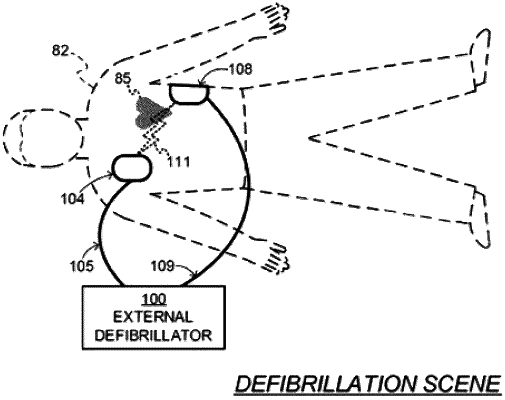| CPC A61N 1/3925 (2013.01) [A61H 31/005 (2013.01); A61N 1/36514 (2013.01); A61H 2201/5007 (2013.01); A61H 2201/5043 (2013.01); A61H 2201/5061 (2013.01); A61H 2201/5097 (2013.01); A61H 2230/045 (2013.01); A61H 2230/208 (2013.01); A61H 2230/255 (2013.01)] | 20 Claims |

|
1. A medical device, comprising:
a processor configured to:
identify a ventricular fibrillation (VF) cardiac event by analyzing an ECG signal of a patient;
generate a viability index by analyzing the VF cardiac event and a patient physiological parameter;
determine a classification of the VF cardiac event as a first VF type or a second VF type by analyzing the viability index;
in response to determining the classification of the VF cardiac event, determine a post-defibrillation shock treatment for the patient; and
output an instruction to perform the post-defibrillation shock treatment following delivery of a defibrillation shock to the patient.
|